Paint Your Wagon: Iggy movie unearthed!
Great news for these desolate autumn times. On Tuesday, 23 October 2018, Nigel Young found a 1968 documentary, featuring none other than Iggy the Eskimo. He was so friendly to warn the Church about his discovery. Simultaneously Alex Hoffmann (from Birdie Hop) and Antonio Jesús Reyes (from Solo En Las Nubes) also informed the Reverend of this pretty spectacular find. Let's have a closer look, shall we?
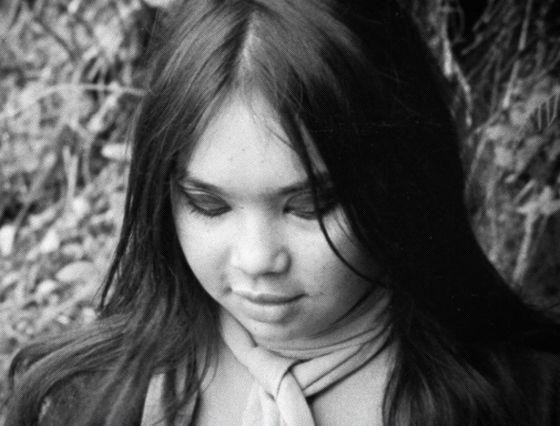

Hippies St Germans
“Hippies at the Port Eliot Estate in St Germans explain a happy hippy way of life and are welcomed by the Earl.”
The full movie can be watched (for free) at the BFI archives, but unfortunately it has been geo-blocked for users outside Great Britain, but as these are the days of the interweb means and methods exist to circumvent that: Hippies St Germans. A short excerpt with only the Iggy bits and pieces (direct link: https://www.youtube.com/watch?v=4tHaIiZFiNA).
Here is how the movie is described by BFI:
Peregrine Eliot aka from 1988 the tenth Earl of St Germans has opened his estate to a community of hippies who seek an alternative way of life. This dreamy film sees news reporter Dale Le Vack meet members of the community and attempts to explore aspirations for centring and pooling resources including giving up traditional living in the pursuit of harmony, freedom, self-sufficiency and vegetarianism.
This sounds all very idyllic, but the hippies in the movie, although unwashed, weren't really hippies to begin with. Except the one we call a rose, obviously.
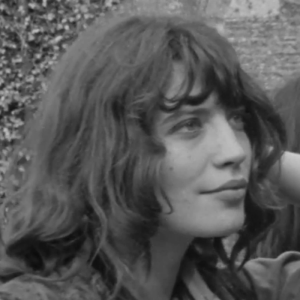
Class struggle
It has been stated before that the psychedelic in-crowd of the mid-sixties were not a part of the proletariat, although they liked to mingle with ordinary work-folk like – let's say – Mick Jagger, to show that they were not snobby. It even was mentioned in a 1965 Daily Express column from William Hickey:
There's no harm these days in knowing a Rolling Stone... And pop people do not seem to mind who they mix with. Some of their best friends, in fact, are fledglings from the upper classes.
Ordinary men – despite the social, cultural and sexual revolution this was still mainly a patriarchal clique – who managed to throw their working class shackles away and entered the progressive ranks of society were embraced in aristocratic circles as a long lost brother returning from a spiritual voyage to Shangri-La. Actor Terence Stamp, originally a working-class boy, 'gleefully expressed his delight that'...
...some yobbo like me could get into the Saddle Room [a hip nightclub] and dance with the Duchess of Bedford's daughter, and get hold of her, and get taken down to Woburn Abbey to hang out for a long weekend and have dinner in the Canaletto Room.(Taken from the very relevant and informative The wild Sloanes who made the Sixties happen, by John Walsh.)

Jeff Dexter
“By the mid-'60s Iggy had become a Zelig-like presence on the capital's music scene.”, wrote music journalist Mark Blake in his Iggy Rose interview (see: The Strange Tale Of Iggy The Eskimo). She knew DJ Jeff Dexter from her Orchid Ballroom days and (probably) through Prince Stash Klossowski De Rola she got in contact with Brian Jones and Keith Richards.
“Dexter loved the attention of the 'aristos'.”, Iggy told the Church. He entered the posh social circles by befriending the Ormsby-Gore sisters, Jane, Victoria and Alice (aka the Harlechs) and David Mlinaric, the British-Austro-Hungarian interior designer who had, among his clients, Mick Jagger, Eric Clapton and Lord Rotschild. Jeff Dexter:
The people around Granny's were rich kids, beautiful people, but that was no barrier for me. They were just people making things happen. Though they had the advantage that they could get a shop together and set up businesses. (DITL, P221)
Barry Miles had about the same opinion:
The music business was the main way in which the working class became involved. The people who were involved with fashion or art tended to be much more upper class. (DITL, P92)
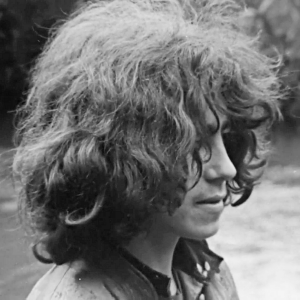
Baghdad House
One place to meet, during the day, was the Baghdad House (or BDH) on Fulham Road where you sat on cushions and could drink a yoghurt with honey and smoke some hash downstairs. Barry Miles notes that the place was difficult to raid because of its many important visitors: Beatles, Stones and their aristocratic friends.
Iggy, to her own account, never was a part of the London elite in-crowd, but mingled with them at different occasions. This came naturally to her, Iggy originated from a well-to-do upper middle-class family who tried to raise her as a well-mannered ladylike debutante. As a child she had several private tutors who taught her the piano, violin, harp, flute and classical guitar. She had a voice coach learning her how to sing. She took ballet classes with a 'madame who was a sadist throwback from the Gestapo', as Iggy once vividly described to us. All these lessons were to no avail as she was a bratty stubborn kid with a mind of her own. Iggy wanted freedom and if that meant running away from home at 14, so be it. She could easily have entered the elite to live a protected and secure life, she certainly had the manners and – frankly – the looks for it, but freedom was much more important to her than having a full stomach and a bed to sleep in, trapped in a golden cage.
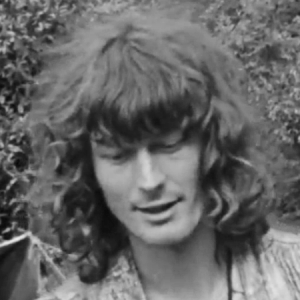
Melting Pot
Before we get to the travelling would-be hippies, let's have some extra name-dropping.
Sir Charles Mark Palmer, 5th Baronet (whatever that means), whose godmother happened to be queen Elizabeth II, opened the English Boy modelling agency in 1965. It was located above the Quorum store, from Ossie Clark and Alice Pollock, who asked Iggy to model some clothes on the catwalk. (She probably was too insecure and refused.)
On another floor of the same building lived Brian Jones with his girlfriend (and model) Melanie Susan 'Suki' Potier (often written as Poitier). But that didn't stop him from inviting Iggy Rose from time to time for some quality entertainment.
Michael Rainey originally was a designer for Quorum, but he opened his own shop Hung On You in 1965. Iggy wasn't the only one who found him an Adonis. Anita Pallenberg:
Michael was just so wonderful and so handsome. I think everybody I knew had a crush on him in those days. (RSG, P192)
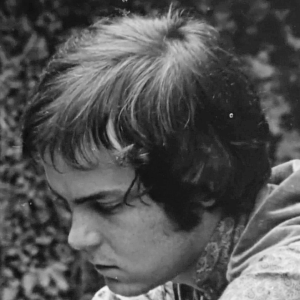
English Boy
Rainey was married to Jane Teresa Denyse Ormsby-Gore, the Lady Jane from the Rolling Stones song and daughter of David Ormsby-Gore, 5th Baron Harlech, a conservative politician and diplomat. Iggy Rose knew the couple pretty welll:
Michael Rainey owned a men's clothes shop, and there was a modelling agency called English Boy. I mixed with that set. The models at that agency were out of this world.
For some pictures of the English Boy models you can go to this page and it is no wonder that Iggy felt at ease with so many beauties around her.
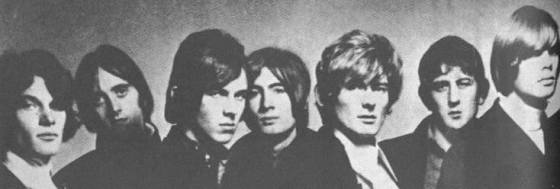
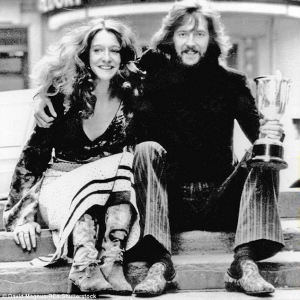
Tears in Heaven
Jane's younger sister was the 'tragically beautiful' Alice Ormsby-Gore, but she and Iggy didn't get along as they had been dating the same guitar player for some time. One night - in 1968 - at The Speakeasy Iggy was on the dance floor, 'lost in music and totally entranced', when Eric Clapton arrived with 17 year old Alice Ormsby-Gore by his side.
Almost four decades later, when Iggy told this anecdote to the Church, she was still not proud of her behaviour that night.
She threw one of her legendary temper tantrums and had to be removed from the nightclub. At first another guitarist hugged her and tried to calm her down by softly chanting hare krishna. But Iggy was too angry and refused to leave the Speak with him. A baffled George Harrison could only shake his head at so many stubbornness. At last one of the managers (Roy Flynn or Mike Carey, probably) escorted Iggy to his office where she cooled down with a hot cup of tea, sitting on the floor sobbing.

Bad Love
Through our conversations with Iggy we learned that she had quite a crush for the alleged lady-killer. After their breakup he denied that it had ever happened and we wonder if this has ever been described in one of the many Clapton biographies.
Perhaps it was all for the better. It is rumoured that Eric Clapton did not treat his fiancé well during their five year relationship and after the breakup he said he had never loved her. Alice followed Eric in his heroin addiction and while Clapton could recover Alice died of an overdose in 1995.
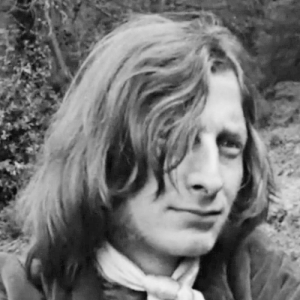
Lambton
Other friends of Iggy, through Jeff Dexter, were the eldest Lambton sisters: “Beatrice took care of me for a while.” Iggy probably meant Lady Beatrix Nevill (née: Lambton, 1949) who had four sisters: Lucinda (1943), Rose Diana (1952), Anne Mary (1954) and Isabella (1958). Their father was Lord Antony Claud Frederick Lambton, an MP who was caught in 1973 in a (minor) political scandal after he was found in bed with two prostitutes and some drugs.
Iggy probably only knew the two older sisters Beatrix and Lucinda, as the others were far too young. There is not a lot more that can be said as they apparently stayed out the gossip pages, at least in the sixties.
Lucinda wrote several books, was a photographer and an acclaimed TV broadcaster. Her younger sister Anne Lambton was a confidantes of Andy Warhol and starred in the Sex Pistols biography Sid and Nancy. In 2013 the family sued each other over the £12 million estate of their deceased father.
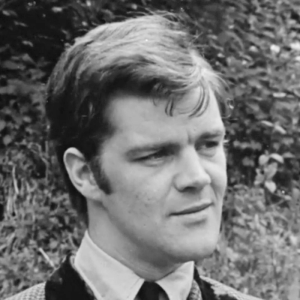
Port Eliot
The age of Aquarius was one were many youngsters were looking for an alternative lifestyle, an alternative philosophy, an alternative religion. In some cases this meant throwing those restraining British Christian traditions overboard, replacing these with equally restricting oriental ones and paradoxically claiming this new set of standards was liberating. Some aristocrats sought it closer to home. Keith Richards, in his autobiography, Life, remembers:
There were a lot of Pre-Raphaelites running around in velvet with scarves tied to their knees, like the Ormsby-Gores, looking for the Holy Grail, the Lost Court of King Arthur, UFOs and ley lines.
Iggy Rose visited the castle at Port Eliot (St Germans, Cornwall) with Michael Rainey and some other people of the smart set. Among them Henrietta Moraes (née: Audrey Wendy Abbott) who had been an equally free-spirited woman and junkie, although a decade and a half before. She was the muse and inspiration for many artists of the Soho subculture, including Lucian Freud, Francis Bacon and Maggi Hambling. Iggy the Eskimo:
There's a place in Cornwall called Port Elliot. A bloke I knew called Peregrine has a castle there. For the May Day celebrations a party of his friends would gather round the village, which upset the Morris dancers. Peregrine's beautiful ladies were sitting astride the horses that were adorned with flower garlands, dressed as dames from King Arthur's Court.
The above probably means that Iggy visited the castle more than once, as she was there with Michael Rainey and - later - with Mark Palmer's gypsy caravan.
Master and Servants
The master of the estate (as he is so accurately described by his grovelling interviewer) was Peregrine Eliot, 10th Earl of St Germans. He was a partner in Seltaeb, the Beatles merchandising company from the sixties. He was married to Jacquetta Jean Frederika Lampson, a daughter of a well known British diplomat. Jacquetta had been a model for Lucian Freud and performed in the 1967 movie Echoes of Silence. Also present in the documentary is her sister Roxana 'Bunty' Rose Catherine Naila Lampson. She was married to Ian Ross, who co-founded Radio Caroline.
Peregrine Eliot later hosted several festivals on his estate. The Elephant Fayre in the eighties and the Port Eliot Lit Fest from 2010 and later.
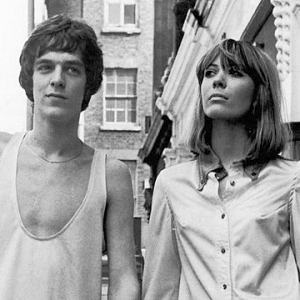
Aristo-Gypsies
The summer of love was slowly coming to an end and fun days were over. John Walsh in The wild Sloanes who made the Sixties happen:
As the summer of 1967 slid into autumn, things paled. Hippie and flower-child fashions became a high-street style rather than a statement of individualism. Sporting flowers in your hair or marigolds drawn in biro on your cheeks became passé. Many boutiques closed down. Michael Rainey and Jane Ormsby-Gore embarked on a spiritual quest. 'We were seriously into soul-seeking and going on fasts and meditating,' she said later. 'We left London, sold everything, gave away everything, and went to live in Gozo [Malta, FA].'
Another aristocrat had a different idea. Sir Mark Palmer seriously wanted to find the Holy Grail. He dressed as the archetypal druid from the Asterix cartoons and travelled through Britain in a horse-drawn gypsy caravan, taking with him some like-minded souls like musician Dave Tomlin from the guerrilla underground band The Giant Sun Trolley who played at the legendary '14th Hour Technicolor Dream' (later they evolved into The Third Ear Band).
Maldwyn Thomas, an English Boy model, was there as well from the start:
I was round at Mark's flat in Radnor Walk and he said, 'I'm going to drop out, do you want to come?' (…) It wasn't luxurious travelling in a caravan. Quite the opposite. (…) We bought a dung-cart, a sort of tipper cart. We put a tilt on it and wrapped it in canvas and it was very, very primitive. Mark bought this horse, a huge black and white mare. That was the start – and we set off. (DITL, P216)
The caravan was far from luxurious, but – for some reason or another – the idea appealed to many people, although some just visited the traveller's band for a weekend, like Brian Jones and his girlfriend Suki.
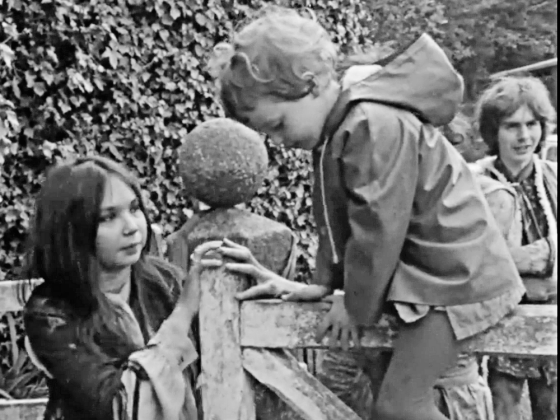
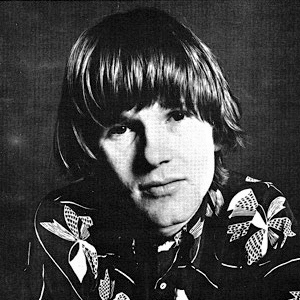
Aristo-copy-cats
Mark Palmer wasn't the only one to roam through England in a horse-driven caravan. Barry Miles took over the lease of the Michael and Jane Rainey house when they decided to move. Its living room had a yellow carpet and that (allegedly) inspired Donovan to write Mellow Yellow. Before they relocated to Malta they also went on a Holy Grail quest.
They were into ley lines and flying saucers and that sort of cuts across all sorts of class barriers; When Jane and Michael left London they went in a sort of gypsy caravan travelling along ley lines to Wales with motorcycle out-riders. This is a sort of eccentricity you've always had among English aristocrats. They're famous for being very cuckoo, a lot of them. (RSG, P237)

And Iggy
A bunch of aristocrat hippies, travelling along the ley lines looking for UFOs and celebrating unsolicited sex. Who could refuse such an offer? Certainly not Iggy:
There was a glorious summer where I travelled around in a beautifully painted real-life gypsy caravan, pulled by a magnificent cart horse. At first I did not realise who Mark Palmer was. I thought he and his gang were hippies like me. Mark was my knight in shining armour, who took me under his wings.
Mark Palmer continued his quest till the mid-seventies. He and his gang of rich libertine new-age followers overwintered at Stargroves, a manor house at East Woodhay (Hampshire), owned by Mick Jagger.
So there you have it, the story of Iggy and her summer trip on a gypsy caravan, as documented by news reporter Dale Le Vack.
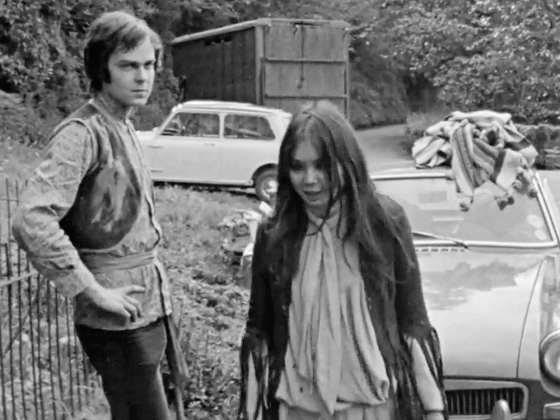
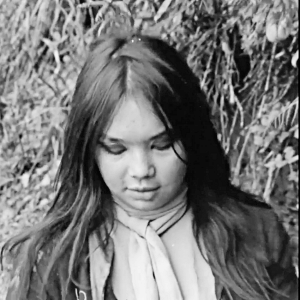
A last word...
It is not sure why Iggy left the commune, probably after the summer of 1968, but maybe her aversion of vegetarianism had something to do with it.
I have done the hippy commune... with the lentils and mantra and bongo bashing and tuneless flute playing. There was lots of plonk and unspiritual drugs... I'm not a diabetic! I just craved for the bloodiest steak.
That's our Iggy like we know her. She never could stay long at one place.
A tale of two Henrietta's
A follow-up article has been published in 2020 with additional information: A Tale of Two Henriettas
Our Tumblr page has got some more pictures: Port Eliot. If you recognise some of the people portraited in the documentary, let us know!
Note: some sources claim it's Ormsby Gore, without the hyphen, but as Wikipedia puts it with one, i.c. Ormsby-Gore, that's the spelling we've used for this article.
Many thanks to: Jeff Dexter, Alex Peter Hoffmann, Jay Jeer, London
in the 60s & 70s, Sophie Partridge, Antonio Jesús Reyes, The
Iggy Rose Archives, Mim Scala, Greg Selby, Nigel Young.
♥ Libby ♥
Iggy ♥
Sources (other than the above internet links):
Green, Jonathon: Days
In The Life, Pimlico, London, 1998, p.187-190., p.92, 216, 221.
Levy,
Shawn: Ready Steady Go!, Broadway Books, New York, 2003,
p.192,237.
Miles, Barry: In The Sixties, Rocket 88, London,
2017 (updated version), p.298.
Miles, Barry: London Calling,
Atlantic Books, London, 2010, p.213, 263.


